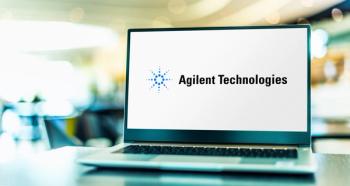
E-Separation Solutions
- E-Separation Solutions-03-03-2009
- Volume 0
- Issue 0
Market Profile: Molecular Spectroscopy Techniques
Like liquid and gas chromatography, molecular spectroscopy instruments are common tools in analytical and life science laboratories. Molecular spectroscopy technologies such as UV-Vis and IR are often incorporated as detectors for LC and GC instruments. Users will also use standalone (or off-line) molecular spectroscopy units as a complementary tool in many quality control and R&D laboratory settings.
Like liquid and gas chromatography, molecular spectroscopy instruments are common tools in analytical and life science laboratories. Molecular spectroscopy technologies such as UV-Vis and IR are often incorporated as detectors for LC and GC instruments. Users will also use standalone (or off-line) molecular spectroscopy units as a complementary tool in many quality control and R and D laboratory settings.
Survey Demographics: Region
Molecular spectroscopy measures the interaction of light with a specific sample. The absorption, emission, and/or reflection from a sample of light with wavelengths in the ultraviolet, visible, and/or infrared regions is characteristic of the various molecular vibrations, rotations, and other changes in the energy states of the interacting chemical species, and are unique to differing molecular species. Molecular spectroscopy techniques are non-destructive, and except for nuclear magnetic resonance (NMR), they can analyze liquid, gaseous, and solid samples.
Fluorescence, ultraviolet-visible (UV-Vis) and near infrared (NIR) spectroscopy techniques are quantitative techniques, while infrared (IR), NMR, color, and Raman spectroscopy provide qualitative measurements. NMR and IR both measure an absorbance spectrum, while color and Raman spectroscopy measure scattered or reflected light. Of these techniques, NMR is the most powerful technique, and can elucidate very specific structural information about a sample.
In a recent survey of 525 molecular spectroscopy users around the world, UV-Vis and IR instruments were the most common type of molecular spectroscopy instruments mentioned, used by more than 70% and 50% of the respondents, respectively. Responses were obtained from a variety of industry sectors and over 40 different countries, albeit most respondents were from the US and Europe.
The foregoing data was extracted and adapted from SDi’s Worldwide Molecular Spectroscopy Survey: Corroboration Market Trends and Revealing End-User Opinions. For more information, contact Glenn Cudiamat, VP of Research Services, Strategic Directions International, Inc., 6242 Westchester Parkway, Suite 100, Los Angeles, CA 90045, tel. (310) 641-4982, fax (310) 641-8851, e-mail:
Articles in this issue
almost 17 years ago
Technology Forum: GCalmost 17 years ago
Ask the Editor: Replacing Acetonitrilealmost 17 years ago
Determination of Aminoglycoside Antibiotics by HPLC with ELSDNewsletter
Join the global community of analytical scientists who trust LCGC for insights on the latest techniques, trends, and expert solutions in chromatography.



